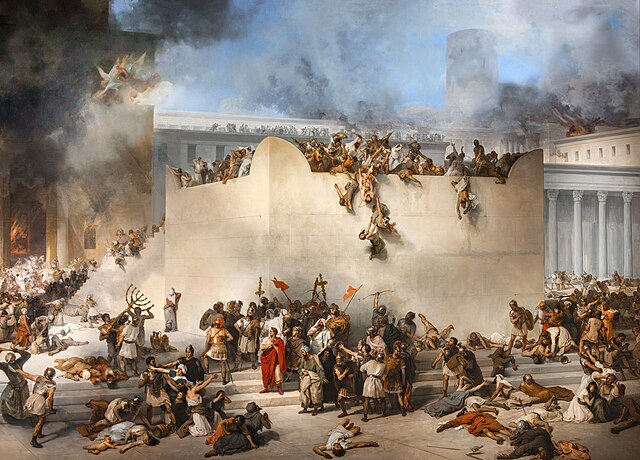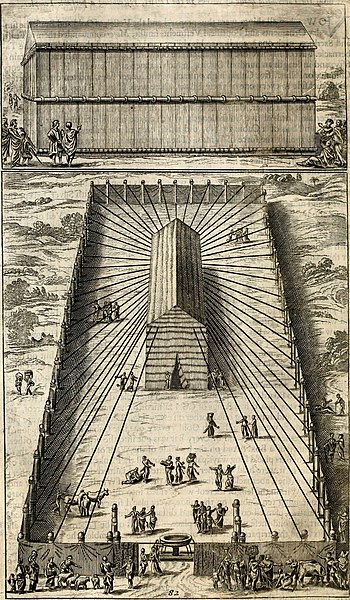Altars in the Hebrew Bible were typically made of earth or unwrought stone. Altars were generally erected in conspicuous places. The first time the word altar is mentioned and recorded in the Hebrew Bible is that it was erected by Noah, although it does not specify that there was an altar in. Other altars were erected by Abraham, by Isaac, by Jacob, by Moses, and by Saul.
Model depiction of the Altar of Burnt Offerings in the Tabernacle.
The altar (illustration from Brockhaus and Efron Jewish Encyclopedia (1906–1913))
Destruction of the Temple of Jerusalem, by Francesco Hayez. This imaginative depiction centers on the Altar of Burnt Offerings.
Model of the Golden Altar
According to the Hebrew Bible, the tabernacle, also known as the Tent of the Congregation, was the portable earthly dwelling used by the Israelites from the Exodus until the conquest of Canaan. Moses was instructed at Mount Sinai to construct and transport the tabernacle with the Israelites on their journey through the wilderness and their subsequent conquest of the Promised Land. After 440 years, Solomon's Temple in Jerusalem superseded it as the dwelling-place of God.
Model of the tabernacle in Timna Valley Park, Israel
The tabernacle, engraving from Robert Arnauld d'Andilly's 1683 translation of Josephus.
Tabernacle Tent dimensions according to the Book of Exodus
Tabernacle Tent and Courtyard dimensions according to the Book of Exodus








